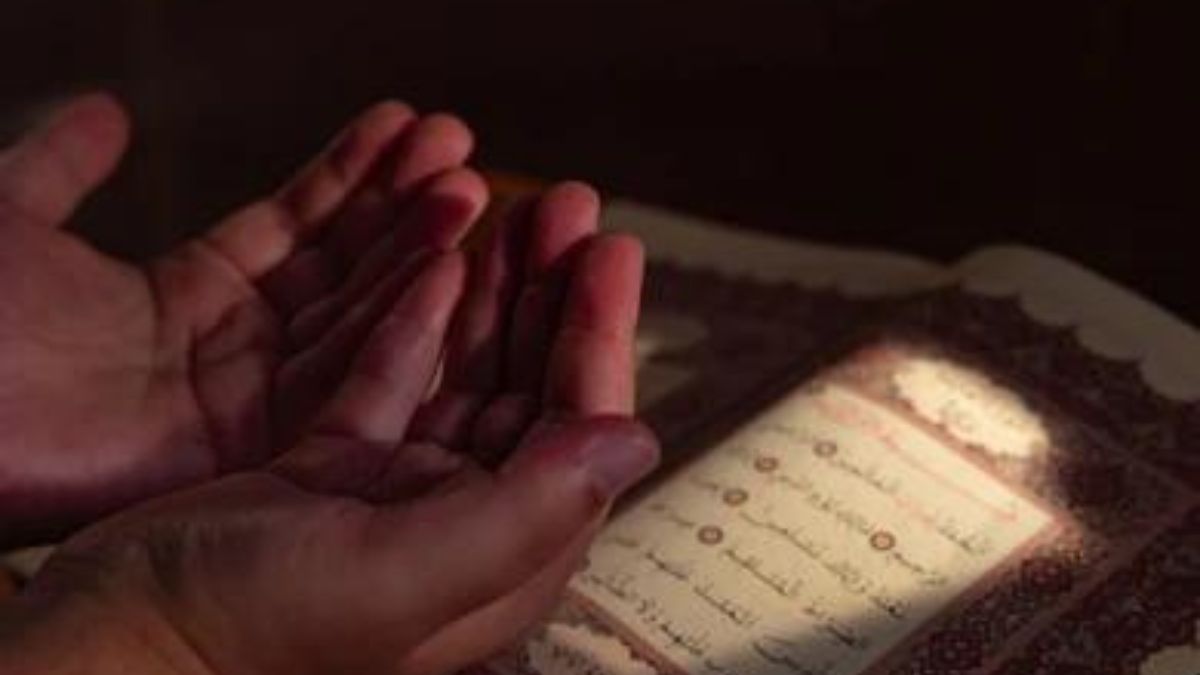HOME
Dua for marrying the person you love

Making Dua for marrying the person you love is a spiritual way of seeking Allah’s help and guidance in your relationship. Through Dua , you connect with Allah’s wisdom, ensuring that your desires align with His divine plan. It helps you gain clarity, strengthening your faith and patience while trusting that Allah knows what is best for you.
When making Dua for marriage, you can be specific in your prayers and recite Duas such as **”Rabbi inni lima anzalta ilayya min khayrin faqir”** (Surah Al-Qasas, 28:24). Additionally, performing **Salat al-Istikhara** helps in seeking Allah’s guidance on whether marrying that person is in your best interest.
The key takeaway is to trust Allah’s plan, understanding that whatever He wills will bring the greatest happiness and fulfillment, even if it differs from your original desire.
Love is a beautiful emotion, and when it’s directed towards someone you hope to marry, it becomes a deep and personal desire. In Islam, love and marriage are regarded as significant parts of life, and seeking Allah’s help through Dua (supplication) can play a powerful role in making that love a reality.
Dua as a Form of Clarity
Love can sometimes cloud judgment, and it’s easy to be overwhelmed by emotions. Making Dua for marrying the person you love allows you to ask Allah for clarity, peace, and the ability to make the right decision. Through this process, you may come to realize whether this person is truly right for you or if there’s a better path ahead.
Strengthens Faith and Patience
When making Dua, it’s essential to understand that Allah answers prayers in ways that are best for us, even if they differ from our own desires. Dua for marriage teaches patience and trust in the process. If things don’t happen as quickly as you want, it becomes an exercise in deepening your faith and waiting for the right moment.
Making a Specific Dua for marrying the person you love
Islam encourages believers to be specific in their Duas. If you are in love with someone and hope to marry them, don’t hesitate to ask Allah directly for this. Here’s a beautiful and powerful Dua you can recite:
Dua for Marriage:
“Rabbi inni lima anzalta ilayya min khayrin faqir.” (Surah Al-Qasas, 28:24)
Translation: “My Lord, indeed I am in need of whatever good You would send down to me.”
This Dua is a humble expression of your reliance on Allah for goodness and blessings in your life, including the hope of a righteous spouse.
Dua for getting marry to person you love
This dua is specially for those who have there choice and find a suitable partner for them . This dua will help you to get marry to whom you love . This is practiced since ages and helped lot of people to get marry .
If you feel any problem or have any question feel free to contact Molana ji on what’s app or comment below your question . What should you do? Recite this dua five times every day. Or keep reading it for 40 days or until you get marry.
- Make Wudu.
- Pray the five daily prayers.
- Start reading with Bismillah.
- Read Durood Pak before and after reading the surah.
- Give out Sadaqah before you start reading surah Mumtahina for marriage.
- Ask Allah to help you get marry and find the right person.
Key Aspects of Making Dua for Marriage
- Sincerity and Intention
– Approach your dua with a sincere heart and clear intention. Express your desires and hopes, but also be open to whatever Allah has planned for you. Your dua should be a reflection of your genuine wish for a loving, fulfilling partnership. - Use of Authentic Supplications
– There are specific duas and supplications found in Islamic tradition that are often recommended for seeking a suitable spouse. One such dua is:
– **”اللهم إني أسالك حبك، وحب من يحبك، والعمل الذي يقربني إلى حبك”**
– Translation: “O Allah, I ask You for Your love, the love of those who love You, and the actions that will bring me closer to Your love.” - Regularity and Patience
– Make dua consistently and patiently. Trust in Allah’s timing and wisdom. Sometimes, the journey might be longer than expected, but maintaining faith and patience is key. - Action and Effort
– While dua is a crucial part of seeking a spouse, it should be coupled with practical efforts. Engage in activities that increase your chances of meeting a suitable partner, such as attending social events, seeking help from family and friends, and being open to new opportunities.
Recommended Dua for Marriage
- Dua from Surah Al-Furqan –
– “رَبَّنَا هَبْ لَنَا مِنْ أَزْوَاجِنَا وَذُرِّيَّاتِنَا قُرَّةَ أَعْيُنٍ وَاجْعَلْنَا لِلْمُتَّقِينَ إِمَامًا”
– Translation: “Our Lord, grant us from among our wives and offspring comfort to our eyes and make us an example for the righteous.” - Dua from the Hadith-
– The Prophet Muhammad (peace be upon him) advised:
– “اللهم يا مقلب القلوب ثبت قلبي على دينك”
– Translation: “O Turner of the hearts, make my heart steadfast in Your religion.”
Some important points to be kept in mind –
If you want to get your dua grant by Allah always keep all the points in mind while performing the dua –
- While praying, sit with your face towards Qibla.
- Always perform wudu before performing dua .
- Keep your intentions good and positive , don’t perform dua with negativity in mind .
- Women should not perform dua during there mensuration .
- Don’t share about your dua with anyone till it get accept by Allah .
Conclusion
These above mentioned dua’s are very powerful and effective and all are practice since ages. This dua will help in various issues regarding marriage and help you solve them . If you feel any problem in performing or understanding the dua feel free to contact molana ji on what’s app .

HOME
Navigating the World of Background Checks: Essential Practices for Employers

Introduction to Background Checks
In today’s competitive job market, companies must hire the best candidates. A critical component of this process is a thorough background check. These checks are essential for verifying candidates’ history and ensuring their suitability for a role. Employers often rely on specialized background screening services to streamline and enhance hiring processes.
Employers can confidently assess candidates through comprehensive background screening services, ensuring their workforce remains trustworthy and competent. Given the potential risks involved with negligent hiring, a well-executed background check is not just advisable but essential. This process ultimately supports informed decision-making, contributing to safer and more compliant workplaces.
Why Employers Prioritize Background Checks
Employers must incorporate background checks into their recruiting procedures to guarantee security and safety. They help mitigate risks associated with negligent hiring and reduce workplace incidents. A Society for Human Resource Management study found that rigorous background checks significantly decrease workplace incidents. Additionally, they help verify credentials and curb potential resume fraud, as nearly 85% of job applicants lie or exaggerate their resumes. Employers can make recruiting decisions that support their corporate objectives and culture by thoroughly understanding candidate claims.
Types of Background Checks
Background checks are essential for assessing a candidate’s profile and providing insights into their past legal issues, employment verifications, and credit checks. These checks are tailored to the role requirements, such as education roles requiring criminal history checks for safety and finance roles requiring credit checks for financial reliability. Drug testing is also crucial in industries where safety is paramount. Tailoring these checks based on role requirements ensures relevance and efficacy.
Legal Considerations in Background Checks
Employers must navigate the legal landscape of background checks, navigating regulations like the Fair Credit Reporting Act (FCRA) and EEOC guidelines. These laws protect candidates from discrimination and ensure fairness in the hiring process. Legal consequences, including lawsuits and fines, may result from noncompliance. Employers must strictly adhere to these guidelines, gaining explicit consent for checks and allowing candidates to dispute inaccuracies. This upholds legal standards and ethical hiring principles, fostering trust and respect between employers and potential hires.
Steps to Conduct a Background Check Efficiently
- Define the check’s scope based on the job requirements. Establish what checks are relevant for the role, avoiding unnecessary or intrusive inquiries.
- Select a reputable background check service provider. This ensures access to accurate and updated data.
- Obtain explicit consent from the candidate. Clear communication about what the check entails builds trust and complies with legal requirements.
- Conduct a detailed review of the information gathered. Accurate interpretation of data is crucial to making informed decisions.
- Make decisions based on comprehensive findings. Consider the context of findings and balance them with other candidate attributes.
Tips for Maximizing the Effectiveness of Background Checks
To ensure maximum effectiveness in conducting background checks, it is vital to adopt a consistent approach, performing similar checks across comparable positions. Maintaining legal compliance requires keeping up with local rules and regulations. Moreover, training HR personnel to understand and interpret check results is crucial. This ensures accuracy in hiring and mitigates potential biases, enhancing the overall integrity of the recruitment process.
Additionally, leveraging technology can streamline the process, providing quicker turnaround times and offering centralized data management. This enhances efficiency and reduces errors and oversight during checks, reinforcing the reliability of hiring assessments.
Common Challenges and How to Overcome Them
Conducting background checks has its challenges. Delays in obtaining information, data inaccuracies, and potential biases are common challenges. Automation and third-party verification companies are invaluable tools in resolving these issues, ensuring timely and accurate results. Employing a multifaceted approach that combines technology and human oversight can significantly enhance the reliability and efficiency of background checks.
Moreover, staying informed about potential sources of error, such as outdated records or mistaken identities, ensures that employers can proactively address these challenges. Employers can fine-tune processes and improve accuracy by collaborating closely with background check providers.
Balancing Privacy and Security in the Hiring Process
Employers must balance security and privacy to foster trust and compliance. Transparency about background checks‘ purpose and scope fosters respect and value for candidates. High standards for privacy and security promote a positive candidate experience and a harmonious workplace environment. When candidates understand their information’s use and confidentiality, they are more likely to engage positively in the hiring process, fostering a culture of integrity and mutual respect.
HOME
Parenting Style Repartition Graph: A Deep Dive

Parenting is a grand adventure, filled with twists and turns that require parents to adapt and learn constantly. While there is no one-size-fits-all method to raising children, understanding different parenting styles and their distributions can provide valuable insights. That’s where the parenting style repartition graph comes into play. This tool offers a visual representation of how various parenting methods are spread across different populations, helping parents discern patterns and trends that might influence their approach.
In this post, we’ll dig deep into the concept of the parenting style repartition graph. We’ll explore the various parenting styles it covers, analyze its significance, and offer practical tips for parents seeking to refine their methods. By the end, you’ll have a clearer picture of how parenting styles are distributed and what that means for you and your family.
What is a Parenting Style Repartition Graph?
The parenting style repartition graph is essentially a data visualization tool used to display the distribution of different parenting styles within a given population. These graphs are helpful in understanding how prevalent certain methods are and offer valuable insights into cultural or societal trends in child-rearing.
This graph typically categorizes parenting styles into several groups, such as authoritative, authoritarian, permissive, and uninvolved. By presenting this data visually, the graph allows parents, educators, and researchers to spot patterns and correlations that may not be immediately apparent through traditional studies alone.
By examining a parenting style repartition graph, parents can gain insights into which styles are more common, and how their approach compares to others. This can be particularly useful for new parents seeking guidance, or for those looking to understand how cultural factors might influence parenting.
The Four Core Parenting Styles
Before we explore the graph further, let’s briefly review the four core parenting styles commonly plotted on these graphs:
Authoritative Parenting
Authoritative parents are known for being nurturing, responsive, and supportive. They establish clear expectations and rules but are also open to discussion and feedback. This approach is widely regarded as effective, promoting independence, self-regulation, and social competence in children.
Authoritative parenting is often associated with positive outcomes, including higher academic achievement and better mental health. Many parents strive to adopt this style because of its proven benefits and balanced nature, making it a popular choice in many cultures.
Authoritarian Parenting
In contrast, authoritarian parents prioritize obedience and discipline. They enforce strict rules and expect their children to follow them without question. While this approach may instill respect for authority, it can also lead to reduced self-esteem and social competence.
Authoritarian parenting is often prevalent in cultures that place a high value on order and discipline. However, it’s important to note that while it may be effective in certain contexts, it can also have drawbacks if not balanced with warmth and support.
Permissive Parenting
Permissive parents tend to be indulgent and lenient, often avoiding confrontation or discipline. They may allow their children considerable freedom, hoping to foster creativity and self-expression. However, this approach can sometimes result in a lack of boundaries and self-discipline.
Permissive parenting is often seen in cultures that emphasize individuality and personal freedom. While it can nurture creativity, it may also lead to challenges in setting limits and making responsible decisions.
Uninvolved Parenting
Lastly, uninvolved parents provide minimal guidance or support, often due to external stressors or a lack of awareness. This style can have detrimental effects on a child’s development, as it may lead to feelings of neglect and low self-worth.
Uninvolved parenting is less about choice and more about circumstance. It’s crucial for parents to recognize when they’re veering towards this style, as addressing it can help improve the child’s overall well-being.
Analyzing the Parenting Style Repartition Graph
The parenting style repartition graph allows us to visualize how these styles are distributed across populations and cultures. By examining this graph, we can gain insights into societal norms and the influence of cultural factors on parenting.
When analyzing the graph, consider the following:
Cultural Influences
Cultural norms and values play a significant role in shaping parenting styles. For instance, authoritarian parenting might be more prevalent in societies that value hierarchy and respect for authority, while permissive parenting may be common in cultures that prioritize individuality.
By understanding these cultural influences, parents can better appreciate the diversity of parenting styles and how their own approach fits within a broader context. This awareness can also help break down stereotypes and build empathy for different parenting choices.
Societal Trends
The graph can also highlight societal trends and shifts in parenting approaches over time. For example, as societies become more aware of the importance of mental health, there may be a shift towards more authoritative parenting styles.
Observing these trends allows parents to stay informed about new research and best practices, ensuring they can make informed decisions about their parenting approach. Additionally, it can help foster a sense of community among like-minded parents.
Personal Reflection
Finally, examining the graph offers an opportunity for personal reflection. By comparing their parenting style to those represented on the graph, parents can assess whether their approach aligns with their values and goals.
This reflection can be instrumental in fostering personal growth and development as a parent. By identifying areas for improvement or adjustment, parents can continually refine their methods to better support their children’s well-being.
Practical Tips for Refining Your Parenting Style
Now that we’ve explored the parenting style repartition graph, here are some practical tips to help you refine your approach:
Be Open to Learning
Parenting is an ongoing learning process. Stay informed about new research and best practices by attending workshops, reading books, or joining online communities focused on parenting.
Additionally, seek out diverse perspectives to broaden your understanding of different parenting styles. Engaging with others can help you adapt your approach and develop a well-rounded parenting strategy.
Reflect on Your Values
Take time to reflect on your values and goals as a parent. Consider how these align with your current parenting style and whether any adjustments are needed to better support your child’s development.
By maintaining a strong connection to your values, you can ensure that your parenting approach remains authentic and meaningful. This can also provide a solid foundation for decision-making and problem-solving.
Communicate with Your Child
Open communication is key to understanding your child’s needs and preferences. Encourage your child to express their thoughts and feelings, and actively listen to their feedback.
By fostering a supportive environment, you can build trust and strengthen your relationship with your child. This open dialogue also allows you to make informed decisions about how best to support their growth and development.
Adapt to Your Child’s Needs
Every child is unique, and their needs may change over time. Be prepared to adapt your parenting style to accommodate these shifts, ensuring that your approach remains effective and supportive.
Flexibility is essential for maintaining a strong connection with your child, as it allows you to respond to their evolving needs and foster a nurturing environment. By staying attuned to your child’s development, you can create a lasting positive impact on their well-being.
Conclusion
The parenting style repartition graph is a valuable tool for understanding how different approaches to parenting are distributed across populations. By examining this graph, parents can gain insights into cultural influences, societal trends, and their own methods.
Ultimately, refining your parenting style is an ongoing process that requires openness, reflection, and adaptability. By staying informed and engaged, you can ensure that your approach remains aligned with your values and effectively supports your child’s development.
To further explore this topic, consider seeking out resources like books, workshops, or online forums focused on parenting. These platforms can provide additional insights and support, helping you continue your growth as a parent.
HOME
The Importance of Self-Care: Benefits of Regular Beauty Treatments

Boost Mental Well-being
Mental health experts argue that self-care is not a luxury but a necessity in today’s fast-paced world. Regular beauty treatments like facials, manicures, and massages provide a pause from everyday stressors, fostering mental clarity and rejuvenation. These practices contribute positively to mental health by reducing anxiety and boosting mood, which is crucial for maintaining a balanced state of mind. Harvard Health shares that these practices contribute positively to mental health by reducing anxiety and boosting mood. Getting a facial offers skin benefits and a chance to step away from daily life and participate in a meditative practice that significantly alleviates stress. To learn more about the benefits of beauty treatments, visit https://www.lashandcompany.com/tx-woodlands/.
Enhance Physical Health
Beauty treatments not only improve mental well-being but also enhance physical health. Skincare regimens address issues like acne, pigmentation and premature aging, resulting in healthier, more vibrant skin. Consistent skincare routines can improve these issues over time. Conversely, massage offers health benefits like improved circulation and muscle relaxation, contributing to pain relief. They alleviate muscle tension and soreness, often due to stress and modern living demands. An hour-long massage can leave you feeling rejuvenated, reflecting both physical and emotional benefits.
Confidence and Self-Esteem
Beauty treatments are crucial in enhancing self-esteem and appearance, as they help individuals reduce perceived imperfections and enhance their natural features. These treatments not only improve self-esteem but also enhance social interactions and relationships. The American Psychological Association emphasizes that improved self-perception is directly linked to well-being, stressing the importance of self-care in our lives. Overall, the positive effects of enhanced personal appearances extend beyond the surface, highlighting the importance of self-care in our lives.
Stress Relief
Beauty treatments offer numerous benefits, including stress relief. Salons and spas’ serene environments provide a break from daily life’s chaos and offer physical and mental relaxation. By incorporating beauty treatments into a regular ritual such as a monthly spa day, individuals can maintain a calm and balanced life, less affected by external turmoil. This regular reset helps recalibrate the mind and body, promoting relaxation and mindfulness.
Staying Informed
The beauty industry is constantly evolving, offering new trends and innovations. Staying updated on these changes is crucial for practical beauty and self-care practices. Tailoring treatments to these trends can enhance their effectiveness. Engaging with expert insights from platforms like Vogue Beauty ensures your beauty regimen stays updated with cutting-edge techniques. Regularly updating knowledge ensures your self-care practices benefit your specific needs and lifestyle.
Conclusion
Integrating beauty treatments into your self-care routine can provide numerous benefits, including physical enhancement, mental well-being, stress relief, and increased confidence. Regular scheduling is crucial for maintaining holistic health and tackling challenges with renewed vigor. This balanced approach nurtures both the body and mind, leading to a fulfilled and enriched lifestyle, emphasizing the importance of self-care.
-

 BLOG9 months ago
BLOG9 months agoTribute Printed Pics: Top 10 Ways to Honor Loved Ones
-

 NEWS8 months ago
NEWS8 months agoNEWS JoTechGeeks: How to Stay Updated with the Latest News
-

 BLOG6 months ago
BLOG6 months agoThe //Vital-Mag.net Blog: Your Daily Dose of Inspiration
-

 ENTERTAINMENT9 months ago
ENTERTAINMENT9 months agoFreemoviesfull.cc: Ultimate Guide
-

 HEALTH9 months ago
HEALTH9 months ago2023-1954: Enhancing Health and Vitality
-

 TECH8 months ago
TECH8 months agoWww abithelp .com: Your Ultimate Online Assistance Platform
-

 HEALTH8 months ago
HEALTH8 months agowww healthsciencesforumcom: A Trusted Health Sciences Platform
-

 TECH9 months ago
TECH9 months agoWebtoon XYZ: A Journey into the World of Digital Comics